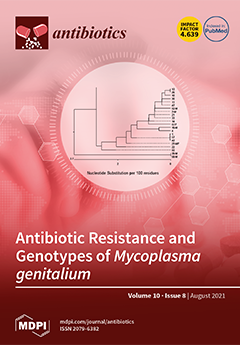This study aims to determine the prevalence of STEC in she-camels suffering from mastitis in semi-arid regions by using traditional culture methods and then confirming it with Serological and molecular techniques in milk samples, camel feces, as well as human stool samples for human contacts. In addition, an antibiotic susceptibility profile for these isolates was investigation. Mastitic milk samples were taken after California Mastitis Test (CMT) procedure, and fecal samples were taken from she-camels and human stool samples, then cultured using traditional methods to isolate
Escherichiacoli. These isolates were initially classified serologically, then an mPCR (Multiplex PCR) was used to determine virulence genes. Finally, both camel and human isolates were tested for antibiotic susceptibility. Out of a total of 180 she-camels, 34 (18.9%) were mastitic (8.3% clinical and 10.6% sub-clinical mastitis), where it was higher in camels bred with other animals. The total presence of
E. coli was 21.9, 13.9, and 33.7% in milk, camel feces, and human stool, respectively, whereas the occurrence of STEC from the total
E. coli isolates were 36, 16, and 31.4% for milk, camel feces, and stool, respectively. Among the camel isolates,
stx1 was the most frequently detected virulence gene, while
hlyA was not detected. The most detected virulence gene in human isolates was
stx2 (45.5%), followed by
stx1. Camel STEC showed resistance to Oxytetracycline only, while human
STEC showed multiple drug resistance to Amoxicillin, Gentamycin, and Clindamycin with 81.8, 72.7, and 63.6%, respectively. Breeding camels in semi-arid areas separately from other animals may reduce the risk of infection with some bacteria, including
E. coli; in contrast, mixed breeding with other animals contributes a significant risk factor for STEC emergence in camels.
Full article






